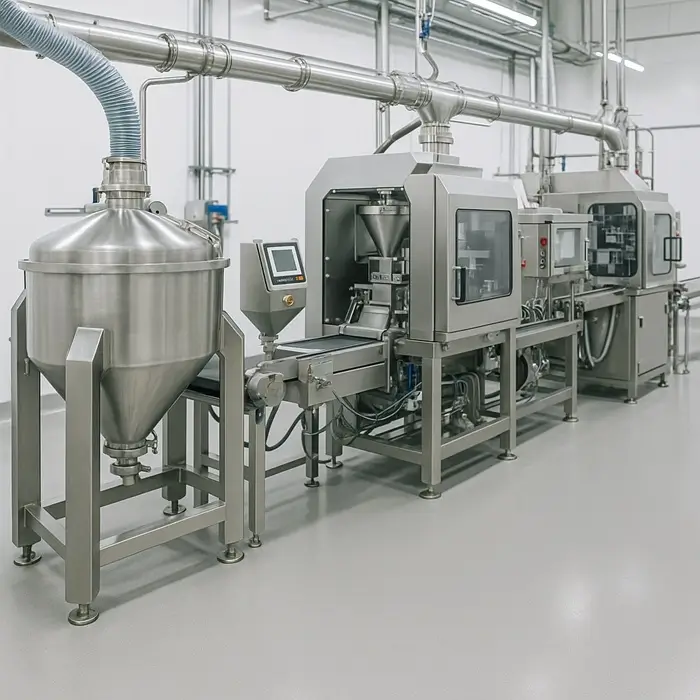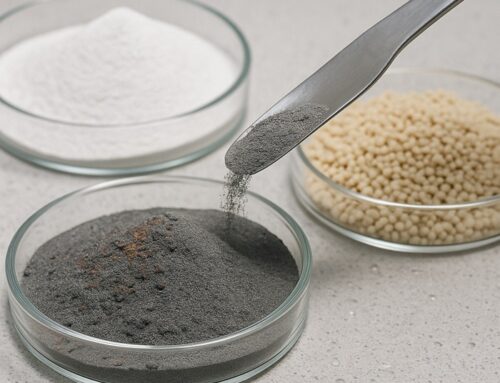Table of contents

Dry electrode battery manufacturing is no longer a niche R&D ambition. Instead, it is rapidly moving into large-scale production. The attraction is clear: lower costs, safer operations, and a reduced environmental footprint. However, this transition changes where risk resides. As a result, the most critical factors now lie upstream in the powders, rather than downstream in coating or calendering.
Why Dry Electrode Battery Manufacturing Matters Now
N-Methyl-2-pyrrolidone (NMP) has been the standard solvent for years. However, even with recovery systems, most emissions still occur during coating and drying. Consequently, regulatory restrictions and rising energy costs push manufacturers toward water-based hybrids or fully dry electrode routes. As a result, as solvent intensity falls, powder behavior becomes the defining factor for yield, product stability, and process efficiency.
Powder Behaviour in a Changing Process Landscape
Cathode powders and conductive agents often have high surface areas and strong cohesive forces. Moreover, humidity changes can alter their flow properties overnight. Likewise, carbon black, essential for conductivity, destabilizes blends when dosing accuracy slips. In addition, PTFE and alternative binders bring their own challenges, fibrillating under stress and shifting blend rheology mid-process. Ultimately, these effects begin at the particle level and intensify under production shear.
Two Main Processing Tracks
Wet Mixing with Enhanced Control
Many manufacturers continue using slurry processes but upgrade their approach. In particular, high-shear mixing shortens dispersion time and stabilizes coating quality. Furthermore, powder-to-solvent ratios and order of addition remain critical. As a result, inline viscosity and solids monitoring ensure coating windows stay within tolerance.
Dry and Semi-Dry Routes
Dry electrode manufacturing eliminates solvent steps entirely, reducing energy load and environmental risk. However, it requires precise binder fibrillation, stable powder networks, and consistent compaction. Promising methods include extruder-enabled fibrillation and nanoparticle deposition. Scaling these methods demands tight powder specifications and continuous in-line verification.
Measuring the Right Powder Properties
Generic flow scores rarely predict process outcomes. Cohesion and yield locus testing help forecast hopper discharge stability. Dynamic flow energy measures aeration sensitivity. Moisture sorption profiles define enforceable humidity controls. Morphology and particle size distribution tails link directly to coating uniformity. Conductive network mapping detects segregation before calendering.
Process Control at the Right Points
Real-time control prevents small changes from becoming production faults. In particular, inline viscosity or torque monitoring during wet mixing exposes dispersion loss early. Likewise, acoustic or optical sensors on feeders prevent rat-holing. Additionally, near-line shear cell testing confirms dischargeability after blending. Finally, post-coating checks on weight-per-area and porosity keep calendering within target.
Equipment Designed for Powder Performance
Maintaining blend integrity while minimizing shear loss is essential for feeders. Similarly, mixers should match energy input to dispersion targets without causing binder damage. For dry routes, extruders require screw designs that encourage controlled fibrillation. Finally, calenders need closed-loop load control linked directly to porosity and resistance targets.
Managing Risks in Dry Electrode Battery Manufacturing
Moisture creep consequently alters the binder’s behavior and flow. Similarly, carbon segregation reduces conductivity. Moreover, over-fibrillation locks blends and makes them unworkable. In addition, NMP phase-downs can reveal coating limitations unexpectedly if dry processes are not validated in advance. Therefore, these risks demand precise powder characterization, strong process design, and consistent monitoring.
Implementation Roadmap for the First 90 Days
1. Week 1–2: Audit powder specifications and add cohesion, sorption, and dynamic flow tests.
2. Week 3–6: Build a mixing DoE linking energy input to dispersion and resistance.
3. Week 7–10: Pilot inline viscosity or torque checks and near-line shear cell testing.
4. Week 11–13: Conduct coated-electrode MSAs for thickness, porosity, and resistance across shifts.
5. Week 14+: Scope a dry or semi-dry pilot with binder route and screw configuration defined.
What Success Looks Like
A successful transition to dry electrode battery manufacturing therefore delivers tighter coating tolerances, stable porosity, and fewer calender jams. Consequently, yields rise because powder adjustments occur before defects appear. Moreover, environmental and safety risks decrease as solvent use declines. Most importantly, production teams then learn to tune powders with the same precision as equipment, thereby setting a new standard for the industry.
FAQ – Dry electrode battery manufacturing
Yes, dry electrode battery manufacturing can scale effectively when powder specifications are tight, binder routes are optimized, and equipment is designed for cohesive powders. Continuous monitoring and process optimization ensure high-volume consistency and stable product quality. Allowing for scaling battery electrode production for mass manufacturing.
Process control methods for electrode manufacturing. Consistent quality in dry electrode battery manufacturing relies on inline torque or viscosity monitoring, near-line shear testing, and porosity checks after calendering. These controls maintain coating thickness, porosity, and electrical resistance within target ranges.
Binder fibrillation effects on battery electrodes. Binder fibrillation creates the structural network that holds powders together in dry electrode battery manufacturing. Controlled fibrillation improves cohesion and conductivity, while over-fibrillation can lock blends and disrupt flow, making accurate control of specific energy and mixing time essential.
The critical powders in battery electrode production boil down to a specific set. In dry electrode battery manufacturing, cathode active materials, conductive carbon powders, and PTFE or alternative binders require precise control. Their flowability, moisture sensitivity, and particle morphology directly affect electrode performance, yield, and process stability.
Advantages of solvent-free battery manufacturing. Dry electrode battery manufacturing removes solvents such as NMP, lowering environmental impact and cutting production costs. This solvent-free cathode production also eliminates drying stages, which reduces energy use, shortens cycle times, and improves overall plant throughput.







